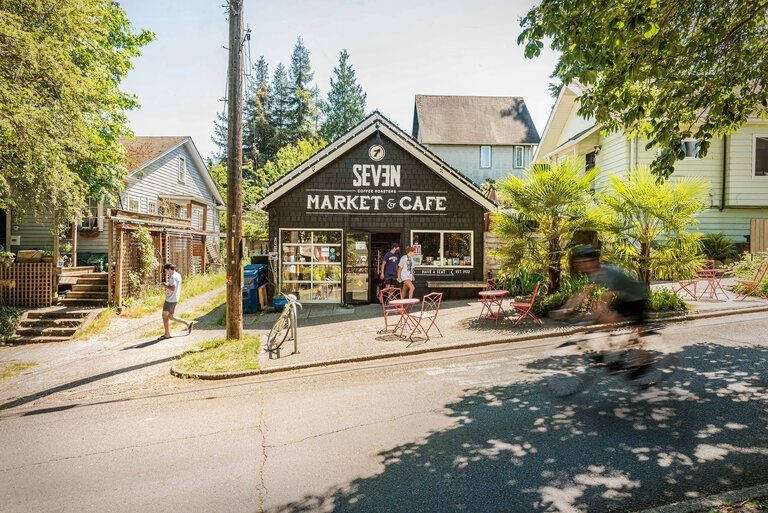Published on July 8, 2021

Originally written by Sam Kraft, principal of D3 Architects and instructor of architecture at the University of Washington.
I used to live in Ravenna in a fourplex that looked like a large single-family house. I could walk to what was then Boulevard Grocery and buy lunch. In this small one-story gabled market, originally a garage then converted into a grocery in the 1920s, I chatted with neighbors, learned about my neighborhood and bought sundries. One time we ran out of toilet paper, and I discovered this a little too late. My now-wife ran down to the grocery and picked up a roll to save the day. When we moved, we looked for a house that was close to a commercial hub so we could still walk to shops. This really limited our options because of the current zoning rules.
The fourplex and the grocery are remnants of a historical Seattle. Today, neither are allowed to be built where we were living because it is a single-family zone. These zoning rules are also historical remnants. Allowing only one family to live in a detached house throughout most of the city dates from the 1923 comprehensive plan, authored by Harland Bartholomew. He was writing zoning codes for cities throughout the country to prevent “colored people” from moving into “finer residential districts.” He was laying the groundwork for racist property covenants and red lining by banks. The effects of these past racist policies are still starkly apparent in the current map of Seattle. But they don’t have to be.
There are a small handful of stores and cafes like Boulevard Grocery (now called Seven Coffee Roasters Market & Cafe) speckled throughout the city’s residential neighborhoods. They have all been in continued operation since at least 1922, weathering the depression, WWII and the Vietnam War, the oil embargo, the Great Recession and now online commerce. Why have they been able to maintain business for 100 years? Because they are beloved local places that connect us — to Seattle’s past; to each other; to the food, drink, art, culture and life of a specific neighborhood. They create more activity on the sidewalk, reducing crime and cars and increasing walking, biking, skipping, scootering and maybe even laughing. (There’s no data yet on that last one.) They create more equity by opening up small business opportunities that tailor their offerings to the neighborhood, generating jobs and keeping economic multipliers in the community.
Continue reading at The Seattle Times.
Originally written by Sam Kraft for The Seattle Times.